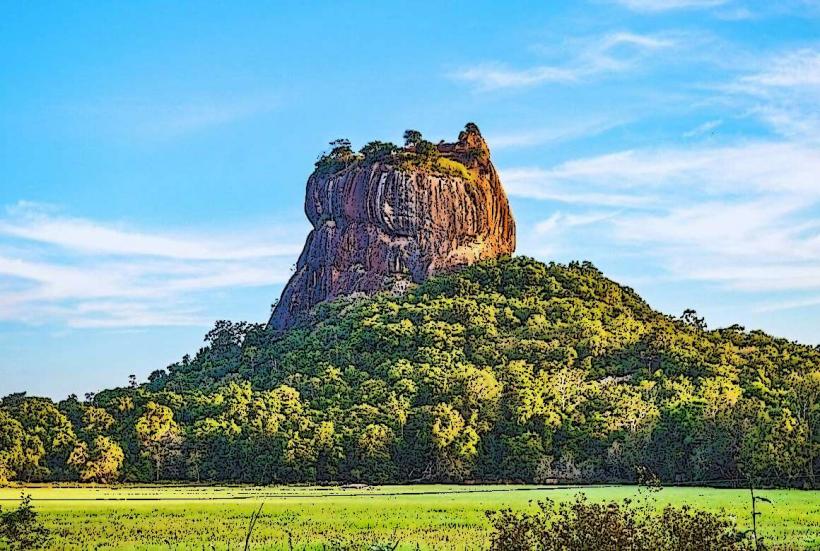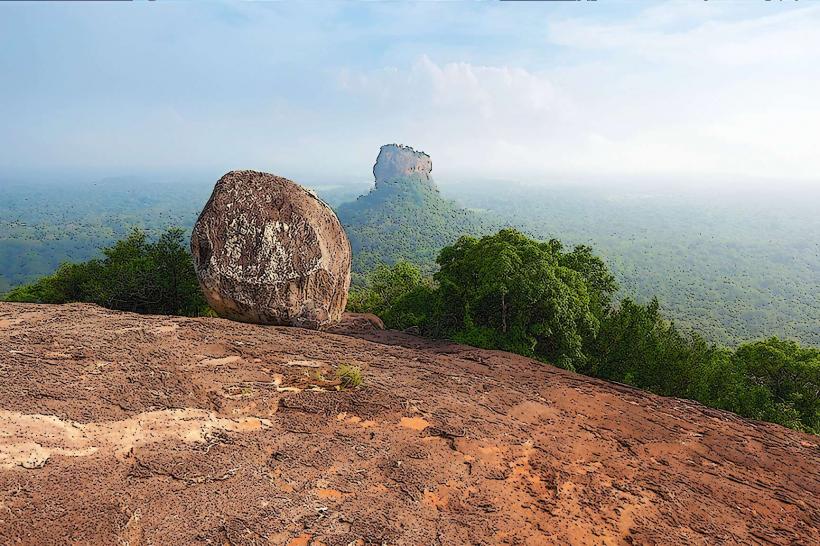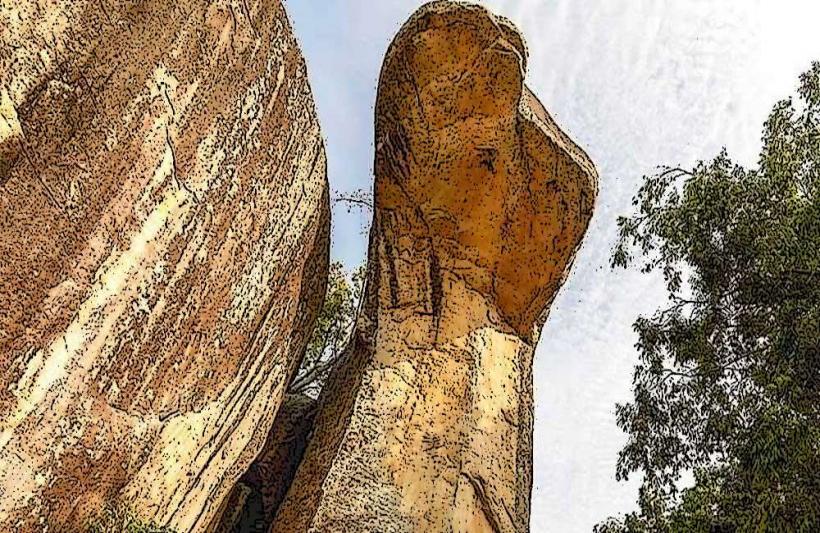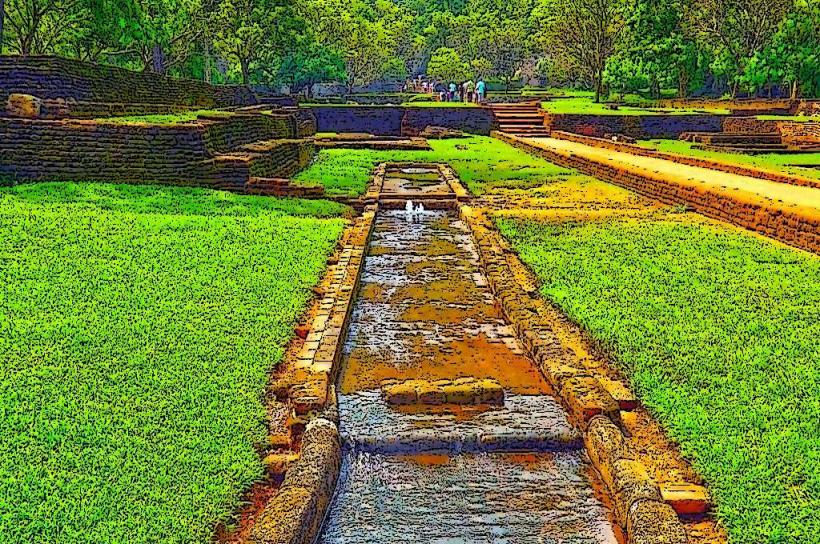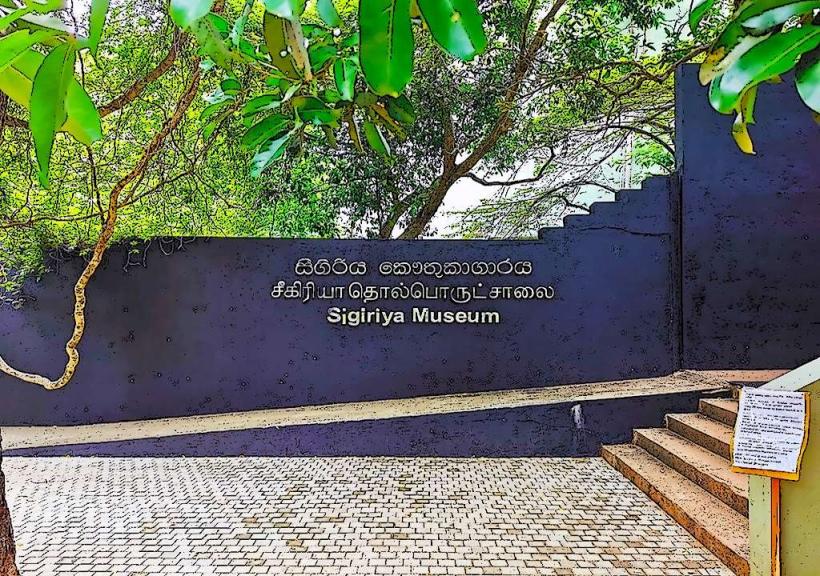Information
Landmark: Mirror WallCity: Sigiriya
Country: Sri Lanka
Continent: Asia
Mirror Wall, Sigiriya Rock Fortress, Sri Lanka
The Mirror Wall is one of the most intriguing and significant features of Sigiriya Rock Fortress, located in Central Sri Lanka. It is an ancient structure with both historical and artistic importance, drawing visitors’ attention for its unique design and the fascinating remnants of ancient inscriptions and frescoes.
Overview
- Name: Mirror Wall
- Location: Sigiriya Rock Fortress, Central Province, Sri Lanka
- Type: Ancient Wall, Historical Artifact
- Length: Approximately 90 meters (295 feet)
- Key Feature: Ancient inscriptions, frescoes, and the reflective surface (formerly)
- UNESCO World Heritage Site: Sigiriya Rock Fortress, including the Mirror Wall, is part of the UNESCO World Heritage Site
Historical and Cultural Significance
Historical Role:
- The Mirror Wall was originally a polished surface that reflected the image of the surroundings and the people who walked past it, giving it the appearance of a mirror. The polished surface of the wall was meant to create an almost magical reflection effect, contributing to the architectural wonder of the Sigiriya Rock Fortress.
- It is believed to have been built during the reign of King Kashyapa (477–495 CE), who is responsible for the construction of the Sigiriya fortress. The Mirror Wall is thought to have served both aesthetic and functional purposes, adding to the grandeur of the rock palace.
- Over time, the mirror-like quality of the wall has worn away, but much of its historical significance remains through the inscriptions and frescoes that adorn it.
Inscriptions on the Wall:
- The Mirror Wall is famous for the inscriptions that cover much of its surface. These ancient writings, believed to date from the 5th century CE, consist of poetic verses, graffiti, and short messages carved by visitors and residents of Sigiriya during ancient times.
- The inscriptions are in Sinhala, and they provide valuable insights into the life, culture, and customs of the people who lived in and around Sigiriya during King Kashyapa’s reign. These messages are believed to have been written by pilgrims, visitors, and even the king’s courtiers. They convey personal thoughts, expressions of admiration, and poetic tributes to the rock fortress.
- The inscriptions have been studied extensively, and many are still legible today, offering a glimpse into the literary traditions and daily lives of ancient Sri Lankans.
Frescoes and Art:
- The Mirror Wall also contains remnants of frescoes, most notably the famous Sigiriya frescoes, which adorn the upper portion of the wall. These frescoes depict beautiful women, believed by many to be celestial nymphs or apsaras, who were either attendants of the gods or symbolic representations of beauty and fertility.
- These frescoes are one of the most famous examples of ancient Sri Lankan art and are admired for their vivid colors, delicate brushwork, and expressive style. The frescoes provide insight into the artistic techniques and aesthetic values of the period.
- Although much of the original color has faded over the centuries, the frescoes still capture the imagination of visitors, contributing to the allure and cultural importance of Sigiriya.
Architectural and Artistic Features
The Wall's Structure:
- The Mirror Wall runs along the western face of Sigiriya Rock, winding for about 90 meters (295 feet) as it leads to the entrance to the upper terraces of the fortress.
- The wall was originally constructed using a combination of bricks and plaster, with the plaster surface highly polished to give it a mirror-like quality. The smooth finish was a feat of ancient craftsmanship and part of Sigiriya’s overall design, which included intricate architecture and landscaping.
- Although much of the mirror-like finish has worn off over time, the Mirror Wall still stands as a testament to the architectural and engineering prowess of the ancient Sri Lankans.
Significance of the Frescoes:
- The frescoes on the Mirror Wall are painted on the plaster surface and include representations of beautiful women in various poses, surrounded by lush greenery and floral designs. The clothing, hairstyles, and jewelry depicted in the frescoes offer a window into the fashion and aesthetics of the time.
- Scholars speculate that these female figures may represent goddesses, royal women, or mythical beings tied to the religious and cultural beliefs of the period. Some theories suggest that they are depictions of the king's concubines, while others argue they are heavenly beings associated with Buddhism or Hinduism.
Conservation and Preservation:
- Due to the fragile nature of the frescoes and the Mirror Wall itself, significant efforts have been made to preserve and protect the wall and its inscriptions. The site is under constant surveillance and monitoring to prevent further damage from weathering or vandalism.
- Visitors are encouraged to respect the site by refraining from touching the wall or attempting to make their own markings, to ensure that the historical integrity of the Mirror Wall is maintained for future generations.
Visitor Experience
- Walking Along the Mirror Wall:
- Visitors to Sigiriya can walk along the Mirror Wall on their way to the top of the fortress. This path offers an opportunity to admire the ancient inscriptions and frescoes, providing a tangible connection to the past.
- As visitors ascend the rock, they can pause along the wall to read the inscriptions, many of which have been carefully transcribed and translated for public understanding. The visual impact of the frescoes and the writings on the wall provides a sense of the cultural heritage that Sigiriya represents.
- Photography and Observation:
- The Mirror Wall, with its intricate frescoes and ancient inscriptions, is a favorite subject for photographers and history enthusiasts. The colors of the frescoes and the details of the inscriptions offer beautiful shots, while the surrounding natural environment creates a serene backdrop.
- Visitors can also admire the rock formations and landscape visible from the foot of the wall and the upper terraces of Sigiriya, making it an all-encompassing cultural and scenic experience.
Conclusion
The Mirror Wall is one of the most iconic features of Sigiriya Rock Fortress, blending art, history, and architecture. Its ancient inscriptions and frescoes offer an invaluable insight into the cultural and artistic practices of ancient Sri Lanka. While the wall’s original reflective surface has faded with time, its artistic legacy and historical significance continue to captivate visitors from around the world. The Mirror Wall is a must-see for anyone visiting Sigiriya, offering a glimpse into the ancient past and the cultural heritage of the island.

